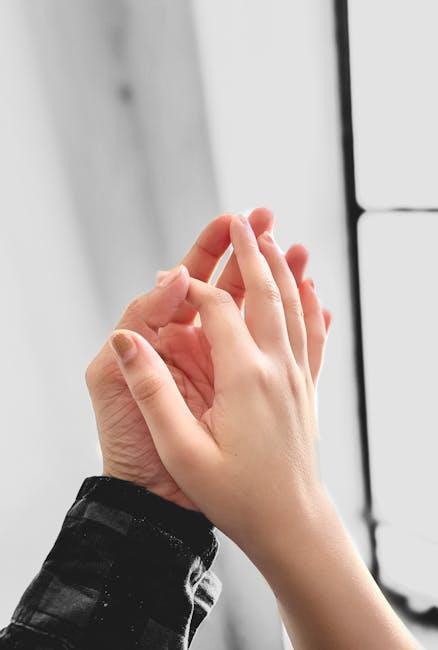In the intricate dance of modern dating, the question of physical contact on a first date often takes center stage. As sparks fly and conversation flows, many ponder whether a gentle touch can enhance connection or if it risks crossing unseen boundaries. This delicate balance between affection and respect raises a pivotal question: should first dates involve any physical contact, or should boundaries remain firm? In this exploration, we delve into the diverse perspectives and social cues that shape this age-old debate, offering insights into how individuals navigate the nuanced world of first impressions and personal space.
Navigating the First Date: Balancing Comfort and Connection
Embarking on a first date can be a thrilling yet nerve-wracking experience, as you navigate the delicate balance between establishing a connection and maintaining comfort. When it comes to physical contact, opinions vary widely, and finding the right approach often depends on individual preferences and the unique dynamics of the encounter. Physical contact, when consensual, can be a powerful way to convey interest and build rapport. A light touch on the arm or a warm handshake can subtly communicate warmth and openness. However, it’s essential to be mindful of your date’s body language and verbal cues, ensuring that any contact is welcome and appropriate.
- Read the Room: Pay attention to non-verbal signals to gauge comfort levels.
- Communicate Clearly: Open a dialogue about boundaries to ensure mutual understanding.
- Respect Personal Space: Everyone has different comfort zones; always prioritize consent.
On the other hand, some may prefer to keep boundaries more defined, allowing conversation and shared experiences to take center stage. This approach can foster a deeper emotional connection without the pressure of physical interaction. Ultimately, the key is to remain genuine and considerate, allowing the relationship to unfold naturally while respecting both parties’ boundaries and comfort levels.
Understanding Personal Boundaries: Communicating Expectations Clearly
Navigating the landscape of personal boundaries on a first date can be a delicate endeavor. It’s essential to communicate expectations clearly, ensuring that both parties feel comfortable and respected. Setting boundaries isn’t about erecting walls; it’s about establishing a foundation of mutual understanding. Here are a few key points to consider:
- Open Communication: Discuss comfort levels before the date. A simple conversation can help avoid misunderstandings and ensure both parties are on the same page.
- Body Language Awareness: Pay attention to non-verbal cues. Sometimes, body language can express more than words, offering insights into how the other person feels.
- Respecting Preferences: Everyone has different comfort levels with physical contact. Respect each other’s preferences, whether it means a handshake, a hug, or maintaining personal space.
By embracing clear communication and being attuned to each other’s signals, you create a safe environment where both individuals can express themselves freely. This approach fosters a genuine connection, laying the groundwork for a respectful and enjoyable experience.

Cultural Perspectives on Physical Contact: A Global View
Across the globe, the nuances of physical contact during first dates vary widely, shaped by cultural norms and social expectations. In some cultures, a handshake or a light touch on the arm may be seen as a friendly gesture, indicating openness and interest. In contrast, other societies may view any form of physical contact on a first date as presumptuous or inappropriate. This diversity in perception underscores the importance of understanding cultural contexts when navigating the delicate dance of dating.
Consider these diverse perspectives:
- Western Cultures: Often more open to casual physical contact, such as hugs or hand-holding, depending on personal comfort levels.
- East Asian Cultures: Tend to prioritize personal space and may view physical contact as a sign of deeper commitment.
- Middle Eastern Cultures: Typically more conservative, where physical contact might be reserved for private settings or more serious relationships.
- Latin American Cultures: Known for warmth and expressiveness, where a kiss on the cheek might be a common greeting.
Understanding these cultural lenses can help individuals navigate first-date interactions with sensitivity and respect, ensuring both parties feel comfortable and valued.

Practical Tips for Respecting Boundaries on a First Date
Navigating the nuances of physical contact on a first date can be tricky, but respecting boundaries is essential for building trust and comfort. Here are some practical tips to consider:
- Communicate Clearly: Before the date, express any preferences or boundaries you may have. This sets a respectful tone and ensures both parties are on the same page.
- Read Body Language: Pay attention to non-verbal cues. If your date seems uncomfortable or pulls away, it’s crucial to respect their space.
- Ask for Consent: If you feel the moment is right for a hug or a kiss, simply ask. A straightforward question can go a long way in making both of you feel respected and valued.
- Stay Mindful: Be aware of the setting and context. A public space may feel safer for some, while others might prefer a more private environment.
Ultimately, the key is to ensure that both individuals feel comfortable and respected, fostering a genuine connection without pressure.



